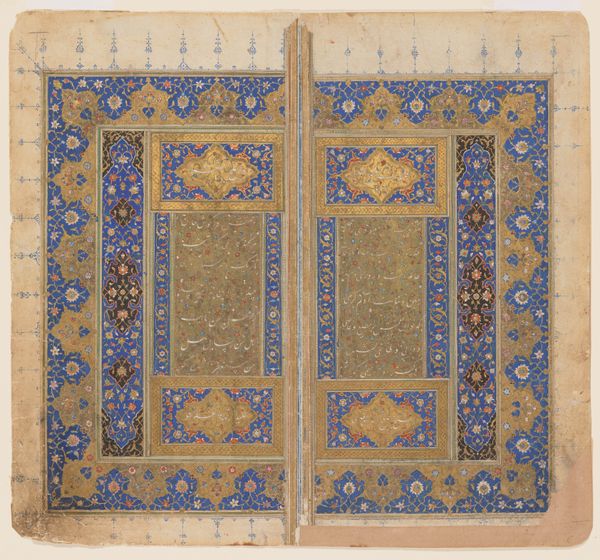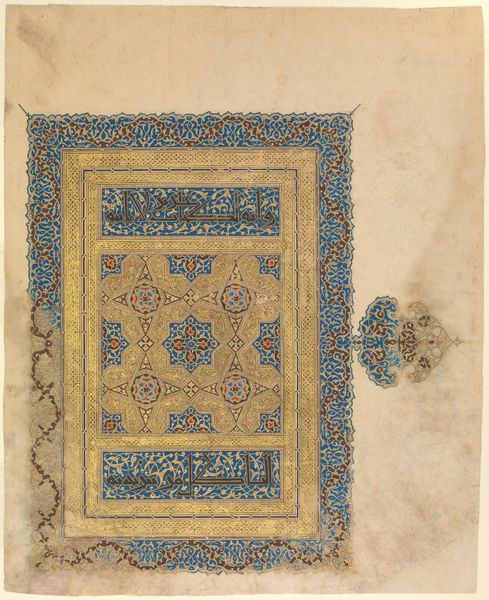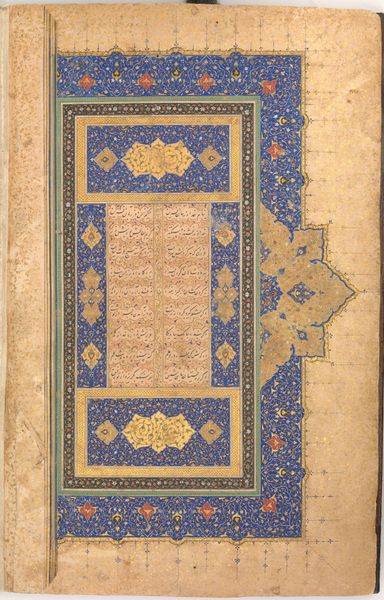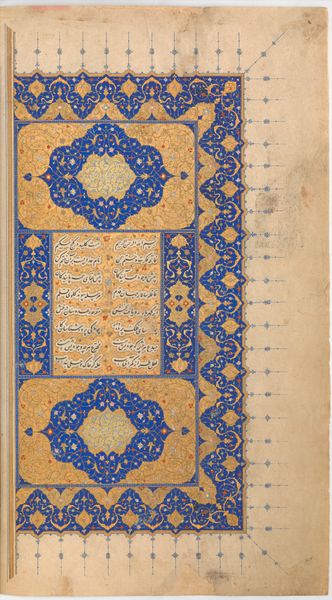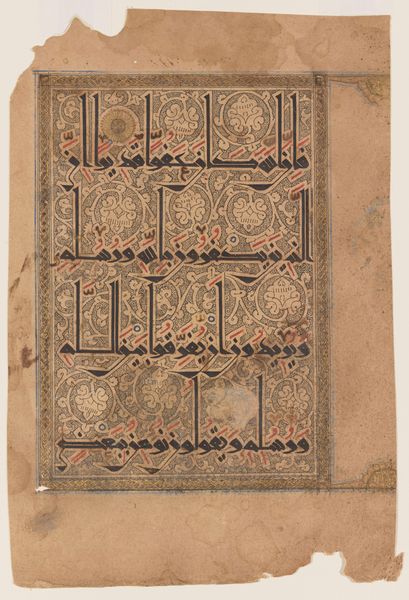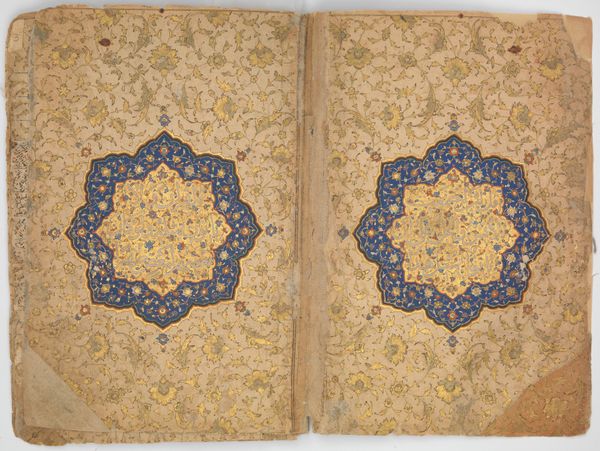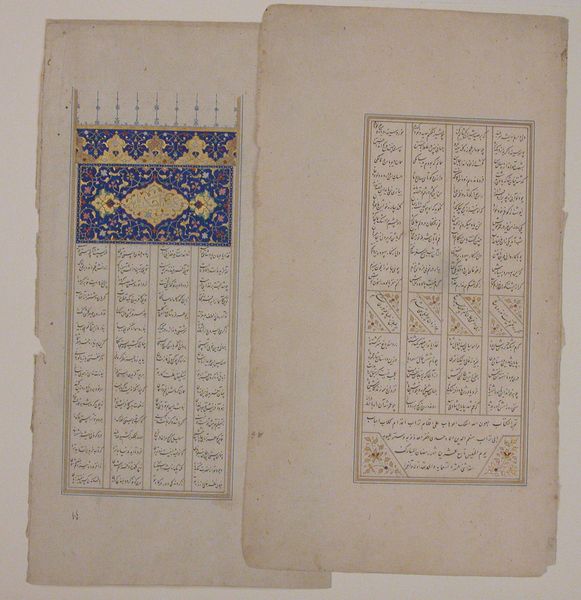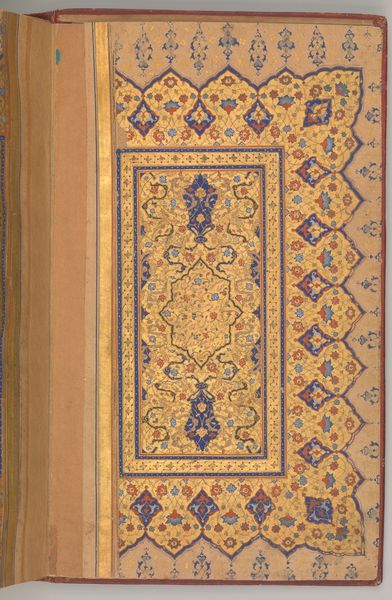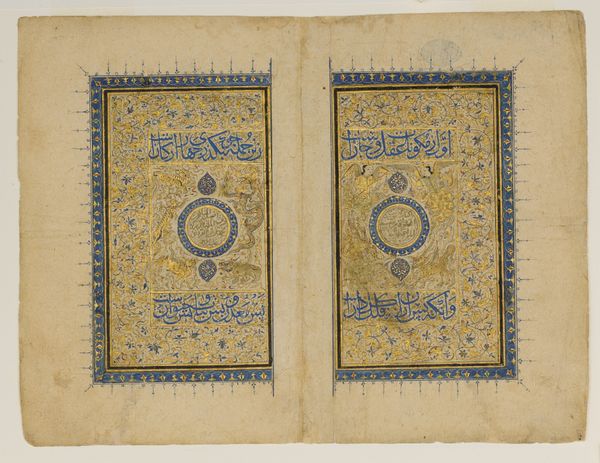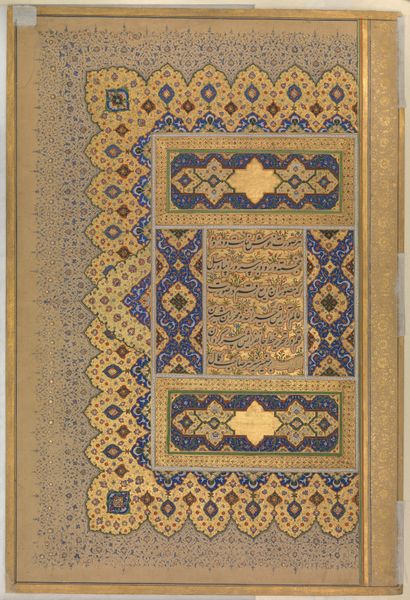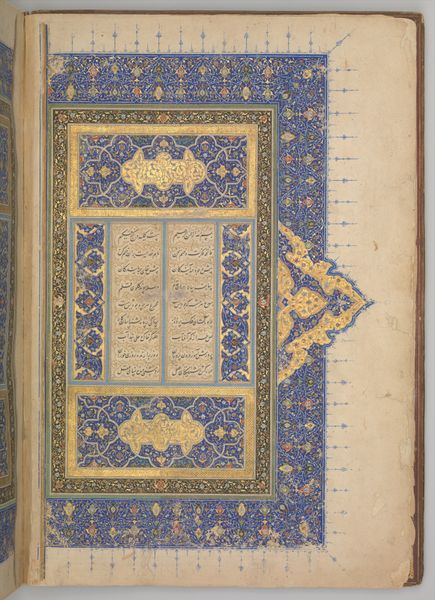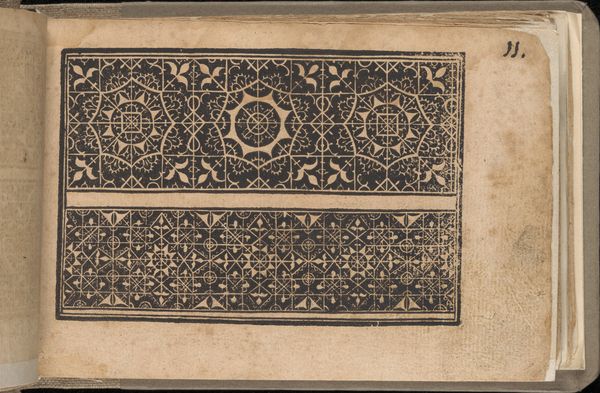
Pages of Calligraphy from a Sharafnama (Book of Honour) of Nizami of Ganja 1595 - 1655
0:00
0:00
painting, watercolor
#
painting
#
asian-art
#
watercolor
#
islamic-art
#
miniature
#
calligraphy
Dimensions: H. 12 1/16 in. (30.6 cm) W. 7 1/2 in. (19 cm)
Copyright: Public Domain
Editor: Here we have two pages of calligraphy from a Sharafnama, or Book of Honor, of Nizami of Ganja, dating roughly from 1595 to 1655. The medium is watercolor and painting, displayed at the Metropolitan Museum of Art. What strikes me is the ornate border that surrounds the text. It seems to almost overwhelm the calligraphy itself. What do you see when you look at this piece? Curator: The dialectic between text and border is central here. Note how the calligraphy isn't merely functional; its very form contributes to the visual texture, echoing the complex patterns of the borders. It avoids becoming purely ornamental, maintaining structural significance through disciplined execution, such as balanced vertical and horizontal axes. Observe also the use of color – the limited palette, dominated by gold and blue, allows for intricate detailing without chromatic overload. It adheres to a specific visual register. Do you notice any other techniques the artist employed to balance decoration with structure? Editor: Yes, I see what you mean about the color balance and how the gold outlines the text blocks. Also, the calligraphy itself seems to have a structure. There's repetition of forms, almost like modules, that echo elements from the decorated panel at the top of the page. Do you see what appear to be tiny floral details spread evenly over the panels as creating rhythm across the entire page, left to right? Curator: Precisely. The details provide a visual counterpoint, animating the surface. Furthermore, the very placement of text blocks creates negative space that influences how we visually track, resulting in structural organization that is independent of the text's narrative meaning. Editor: This has really enhanced my understanding by allowing me to understand a painting element that wasn’t apparent when viewing the entire picture! Curator: By emphasizing the formal relations of part to whole, we have a structure capable of generating ever more aesthetic value and revealing much more than the individual constituents!
Comments
No comments
Be the first to comment and join the conversation on the ultimate creative platform.
